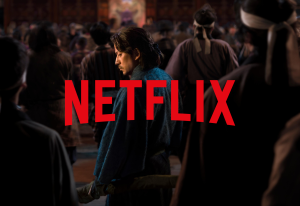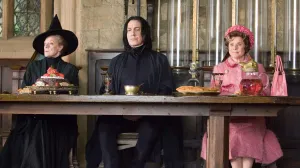One of my favorite anecdotes — something that I throw into professional and personal conversations whenever I can — is about the creation of the multiverse in superhero comics. While the concept of parallel worlds had popped up in the medium here and there, it transcended into something new with 1961’s The Flash #123, from DC’s Gardner Fox, Julius Schwartz, and Carmine Infantino. The inside story, dubbed “The Flash of Two Worlds”, placed the series’ titular Barry Allen / The Flash, a plucky man who got superspeed powers from a lightning strike gone wrong, face-to-face with someone fans never would have expected — his predecessor, Jay Garrick / The Flash. While Jay had originated The Flash’s moniker all the way back in 1940, he and many of DC’s Golden Age superheroes had languished out of publication for decades, an absence that the publisher had to answer for. The answer, it turns out, was that Jay and Barry existed in separate parallel universes, which could only interact when they both vibrated at the same frequency once a year. According to Infantino, that justification came about, in part, because of a dare.
Videos by ComicBook.com
“I’d do a cover, and dammit, they’d write the story around it, so I was getting very upset by this, so I said, ‘I’ll fix you,’” Infantino told NerdTeam30 in 2007. “I did a cover with some guy in the foreground and two Flashes running up, he’s saying, ‘Help!’ and they’re both saying, ‘I’m coming!’ So I put it on his desk and I said, ‘Here. Solve this!’ and I walked out. By the time I got home my phone rang. He said, ‘We got it solved. I went through hell.’ I couldn’t believe it. It was a great story, a terrific story.”
Regardless of intentions, “The Flash of Two Worlds” had a clear impact on the DC Universe, leading to countless team-ups between Barry, Jay, and their fellow superheroes. Once those multiverse-hopping adventures got too complicated in the 1980s, DC launched its landmark Crisis on Infinite Earths crossover to clean things up, with several other “Crisis” events arriving in the decades after. Marvel Comics also cashed in on the concept wholeheartedly, with multiple iterations of Secret Wars and concepts like What If…? and the “Spider-Verse” event. It’s impossible to ignore the fact that the multiverse has carried over into Marvel and DC adaptations as well, whether in animation (Sony’s Spider-Verse movies, Marvel Studios’ What If…?, or DC’s three-part Crisis movie), television (Marvel’s Loki or DC’s “Crisis” crossover on The CW), and film (Marvel’s Spider-Man: No Way Home and Doctor Strange in the Multiverse of Madness, DC’s The Flash, and even Sony’s forthcoming Madame Web). Marvel Studios, in particular, is believed to be doubling down even further on the concept, dubbing its current string of projects the “Multiverse Saga” and slotting in multiverse-hopping movies like this year’s Deadpool 3 (which just wrapped filming this week) and 2027’s Avengers: Secret Wars. All the way back in 1961, the introduction of “The Flash of Two Worlds” changed the course of superhero stories as we know it. It also, in a roundabout way, illuminated the greatest problem with the modern-day use of the trope: an over-reliance on nostalgia.
Granted, in the right context or the right hands, nostalgia can be a meaningful tool in a multiversal story. The most-celebrated multiverse movie in recent memory, The Daniels’ Oscar-winning epic Everything Everywhere All at Once, is rooted in wistfulness for the people or relationships that could have been, under different circumstances. Some of the aforementioned superhero stories have also used the concept to their advantage, by cashing in on the missed potential caused by franchise-wide reboots or recastings. When it aired in late 2019 and early 2020, The CW’s “Crisis” became a maximalist ode to the past few decades of unconnected DC movies and TV shows, looping in Smallville, Birds of Prey, Lucifer, and the 1960s and 1980s iterations of Batman, just to name a few. 2023’s Spider-Man: Across the Spider-Verse finally showcased Donald Glover as a costumed version of The Prowler, years after he appeared as a plain-clothes version of the character in Spider-Man: Homecoming. For many viewers, the pièce de résistance of the concept is 2021’s Spider-Man: No Way Home, which not only brought back Tobey Maguire and Andrew Garfield’s previous incarnations of Peter Parker and half a dozen of their existing villains, but gave them meaningful character beats that fans didn’t know they needed. For a few brief moments, the excitement of these crossovers and cameos was palpable, celebrating the past without taking away from the story of the present or the future.
In the same breath, it’s understandable that general audiences have already gotten burned out on multiversal nostalgia, given how it has been utilized in some projects. 2022’s Doctor Strange in the Multiverse of Madness transported its heroes to a handful of other universes, ultimately landing for a stint of time on Earth-838. Outside of a few cosmetic changes, the biggest difference between Earth-838 and the MCU’s main Earth is the Illuminati, its central superhero team who almost immediately get killed off by Scarlet Witch. The roots of these Illuminati members vary wildly, from a What If…?-esque character swap (Lashanna Lynch’s Maria Rambeau / Captain Marvel), to a fancast diehard Marvel fans were dead-set on for years (John Krasinski’s Reed Richards / Mister Fantastic). But the rest of the team consists of three supposedly-alternate versions of characters we already recognize — Hayley Atwell’s Captain Carter… but not the one from What If…?, Anson Mount’s Black Bolt… but not the one from the panned Inhumans television show, and Patrick Stewart’s Professor X… but not the one from Fox’s first decade of X-Men movies. (The same ambiguous approach was taken to The Marvels‘ post-credits scene, which brought back Kelsey Grammer’s take on Beast but did not indicate if he’s the same character we know.) While the illuminati’s initial introductions were met with a pop from Multiverse of Madness‘ audience, their involvement became something of a punchline, both because of the gruesome nature of their deaths, and because any attachment we had to them was superficial.
A little over a year later, The Flash proved to be an even more egregious example — starting with bringing back Michael Keaton’s beloved Batman to a great, but ultimately meaningless, fanfare. Outside of the gimmick of watching Keaton recite iconic catchphrases one more time, his Batman played a small role in the proceedings, reacting to other characters and offering baffling details about the state of his Gotham City before dying unceremoniously. The Flash‘s third act took things into an even weirder direction, very briefly showing “Chronobowls” of Speed Force energy that contained George Reeves’ Superman, Adam West’s Batman, Christopher Reeve’s Superman, Helen Slater’s Supergirl, and even Nicolas Cage’s Superman from the scrapped Superman Lives movie of the 1990s. These cameos were immediately shocking, in part because of the controversial deep fake technology utilized to create new images of these older or dead actors. But the scene was also shocking because the cameos had absolutely no bearing on what was actually going on, which was the culmination of animosity and trauma among multiple versions of Ezra Miller’s Barry Allen. Instead, these bizarre blips of nostalgia felt like glancing at someone’s impossibly-pristine DVD or action figure collection — reminding you of the movies and TV shows you used to love, as well as how far away our pop culture is from them. Even The Flash‘s final multiversal twist, George Clooney’s 1990s Batman being swapped in during its last scene, proved to have absolutely no repercussions going forward.
Only time will tell which bucket – a wholehearted celebration, or an inconsequential gimmick — the next few years of multiversal superhero adaptations fall into. The little we know about Deadpool 3 seems to straddle the line between the two, centered around the promise of finally getting Ryan Reynolds’ Deadpool and Hugh Jackman’s Wolverine on a proper superhero adventure. Jennifer Garner’s Elektra has also been reported to return in Deadpool 3, but it remains to be seen if her cameo will help validate her dated, but charming 2000s movie appearances, or just be part of a parade of semi-recognizable names or characters. (The fact that the Internet has suggested and exhausted countless theories about what other characters could be in the movie doesn’t help.) Avengers: Secret Wars has been even more of a nebulous beast since before it was even formally announced by Marvel Studios in 2022, and will ultimately need to straddle the line between being the bonanza of cameos and crossovers that fans have wanted for years, and a meaningful fight between good and evil for the MCU itself.
As comic fans can attest, there are plenty of possibilities lurking within the multiverse, endearing audiences to new or old concepts in a short amount of time. Heck, a whole separate conversation can be had around the characters we’ve been introduced to through the multiverse, including (but not limited to) Miles Morales, Spider-Gwen, Power Girl, and Calvin Ellis. At the moment, it feels like the adaptations of DC and Marvel’s multiverse have only scratched the surface of that potential, burning out audiences on nostalgic returns and flashy cameos before they can even reach their peak. As more fictional worlds live, more fictional worlds die, and more fictional worlds never remain the same in the coming years, here’s hoping that starts to change.








